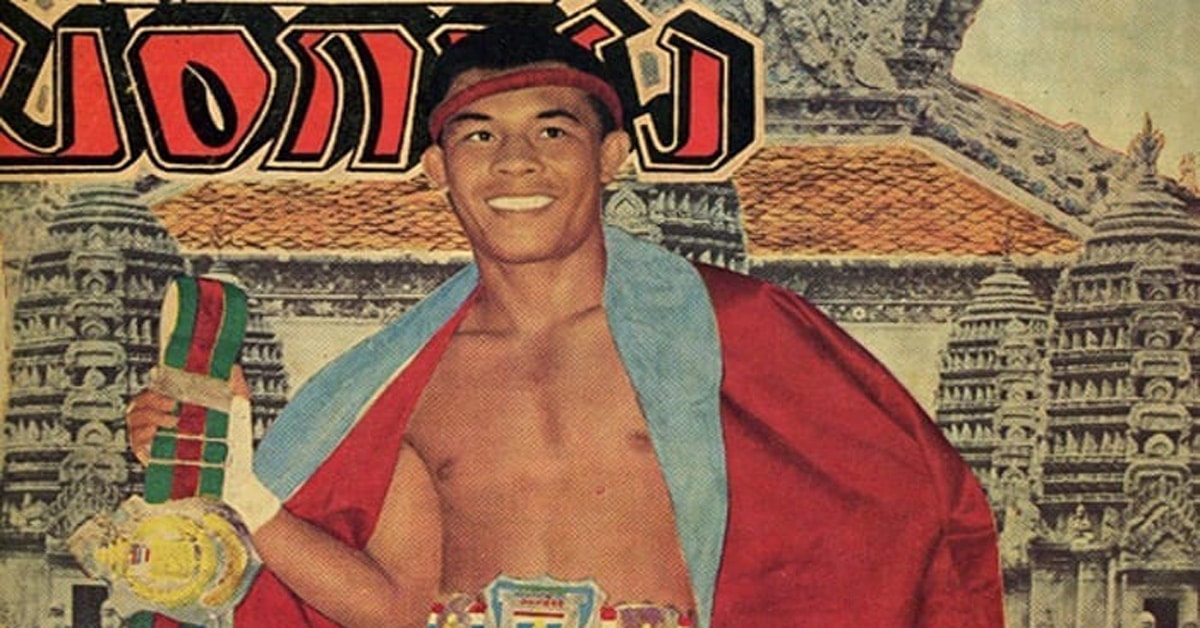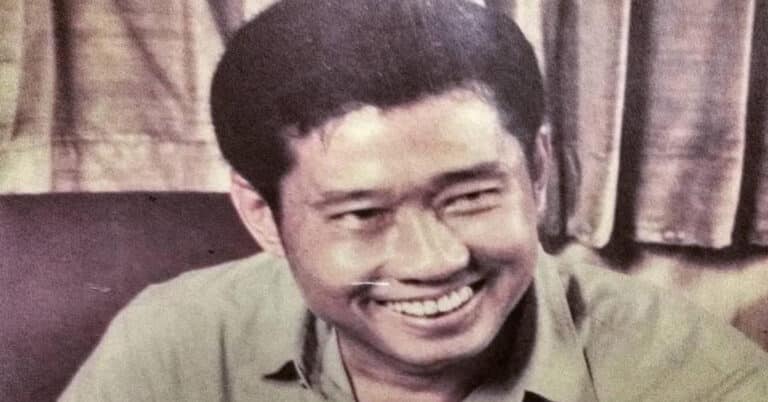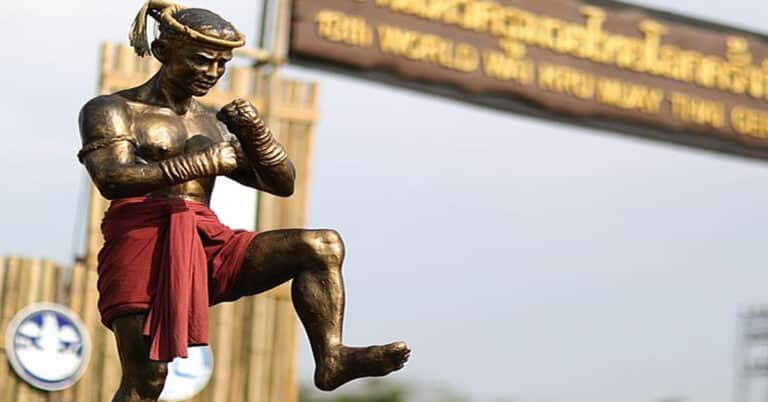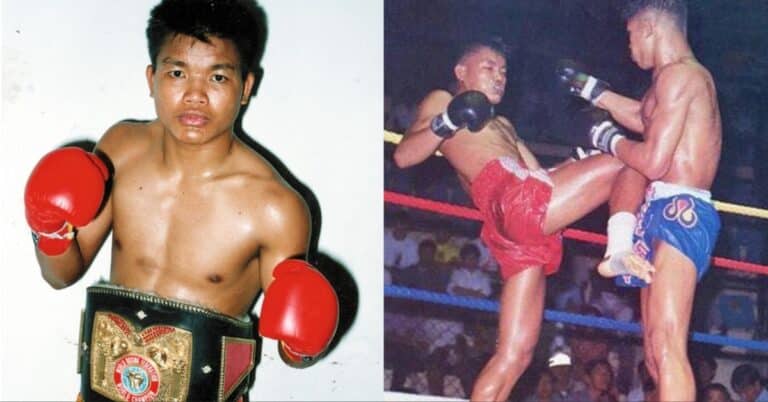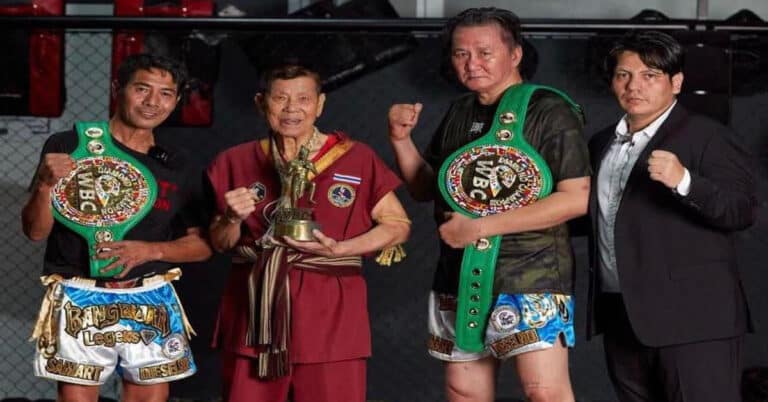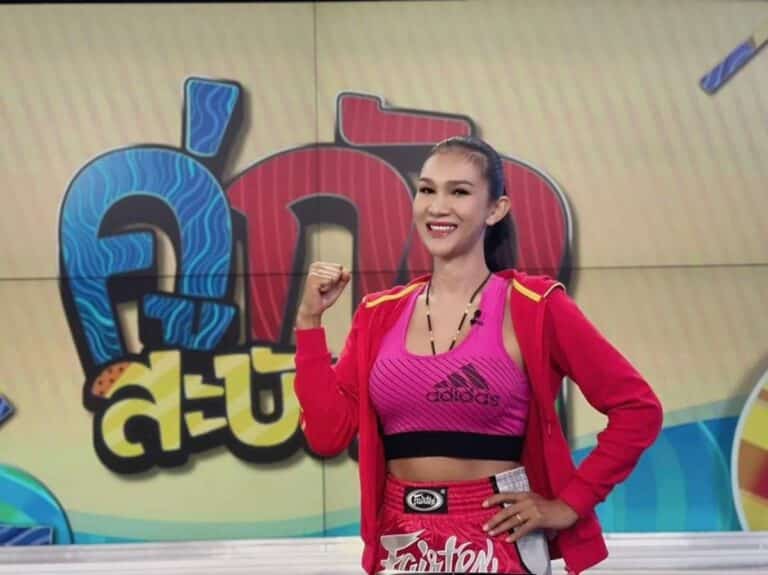Apidej Sit-Hirun: The Golden Leg
Apidej Sit-Hirun has earned many names throughout his storied Muay Thai career: “The Golden Leg,” “The Man of Seven Titles,” and “Muay Thai Fighter of the Century.” Despite so many awards, titles, and nicknames, he is still best known for one thing: his dangerous kicks.
The Nak Muay Apidej Sit-Hirun had an incredible career through the golden era of Muay Thai but began when he was just still a boy of 12 looking to provide for his family. In his first match as a boy, he would win via stoppage due to his kicks. It was clear that he had an advanced talent for the sport. Apidej would grow his skills and strength and eventually earn acclaim for breaking arms with his kicks.
Who is Apidej Sit-Hirun?
| Name: | Narong Yaenprateep or Apidej Sit-Hirun |
| Thai Name: | อภิเดช ศิษย์หิรัญ |
| Date of Birth: | September 1941 |
| Place of Birth: | Samut Songkhram, Thailand |
| Nickname: | The Golden Leg / “Kicker from Bang Nok Khwaek” |
| Gym: | Fairtex |
| Height: | 175 cm (5 ft 9 in) |
| Weight: | 147 lb (67 kg; 10 st 7 lb) |
| Weight Classes: | Welterweight |
| Record(s): | 350 -10 -1 |
| Years Active: | 1958 to 1978 |
| Championships: | Seven Muay Thai Stadium Title, and two Stadium Boxing Titles |
Early Life
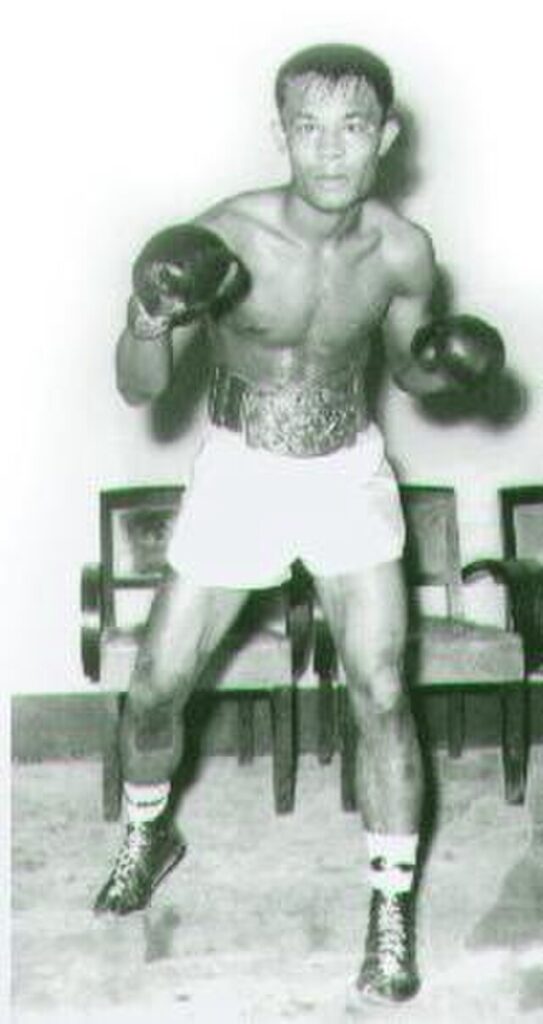
Born in September 1941 in Samut Songkhram, Thailand. Samut Songkhram is known as a less urban developed area of Thailand. Families in this region get by with industries such as fishing and salt trading. Apidej was born into an economically disadvantaged family. Because of this, at just the age of 12, he trained in Muay Thai to help bring in income. This story is quite typical for most Nak Muay. So many fighters in Thailand, even up to this day, do not fight for the love of competition, but simply for the income it provides. In his first match, he brought home 30 baht, which is less than one dollar.
Interestingly, his family did not embrace his choice to enter Muay Thai. His stepfather was quite upset about his decision to do so and nearly stopped his first fight. However, Apidej Sit-Hirun won the match via knockout, and his father changed his mind about the Muay Tae striker.
In an interview, Apidej explained:
“I started with Muay Thai when I was 12 years old to help my family earn a living. When I was young, I liked to fight other kids … My friends started to compete in Muay Thai and that triggered me to do so too. I set out on my first Muay Thai fight under the name Narong-Dej. At that time I hadn’t told my family yet, but my father quickly learned about it and followed me to the ring.
He was really upset and wanted me to get out of the fight right away to teach me a lesson by spanking me. However, the audience begged him to let me finish the fight first. I beat the opponent by knock-out in the second round. This made my step-father extremely proud. From then on, he never stopped me from fighting again.”
Apidej Sit-Hirun
“The Golden Leg”
While Apidej Sit-Hirun had incredible wins, awards, and world championship titles, despite all this, he is largely remembered for his incredible kicks. According to one story, the sound of the impact of his kicks would reverberate throughout the stadium. This thunderous boom of a kick is what Muay Thai fans discussed with each other, and brought more people to the stadium to hear and see it. This roaring kick is what made Apidej Sit-Hirun such a star during his Muay Thai career using a Muay Tae style.
His legendary kick was so powerful that an opponent had to evade. A Nak Muay could not allow this kick to land, or else the match would end by knockout. What’s even more terrifying, is that one could not even block the kick, or else their arms would break.
In 1963, he faced Sompong Charoenmuang. Apidej Sit-Hirun used his granite legs to break both of his opponent’s arms. Sompong never fought again and retired from Muay Thai because of this match.
Apidej Sit-Hirun explained that there is no secret to his kicks. It’s hard training and good footwork. Train hard and master the basics is his advice to others. According to him, he would run uphill for ten kilometers with iron weights on his legs.
Eventually, he became a coach at Fairtex Training Academy, he was not quite as hard his students on himself. He stressed good conditioning and strength training, but more than anything; footwork. Apidej would make his students only jog for an hour every day, which is a vacation compared to ten kilometers uphill with iron weights.
In an interview, Apidej Sit-Hirun explained his coaching philosophy:
“Often when foreign students join the school, they can’t wait to start fighting. This won’t be of any benefit to the students since you must practice the Muay Thai basics first. Then you can learn to fight with an opponent … Muay Thai footwork. You have to be able to quickly get away from dangerous situations. Young students are better at this.”
In addition to strength and conditioning, timing is vital. In an interview, Apidej said:
“The most important thing is to kick at the right time, when the opponent is most vulnerable. Don’t kick at the same target all the time, try to confuse and deceive your opponent with your kicks”.
“The Man of Seven Titles”
Apidej Sit-Hirun earned the nickname “The Man of Seven Titles” due to his extraordinary achievements in Muay Thai. This designation reflects the seven championship belts he held simultaneously across different weight classes and organizations.
At 147 lbs, “The Golden Leg” held multiple titles in both Lumpinee and Rajadamnern Stadium. These two stadiums are at the heart of Muay Thai and were the most prestigious title one could earn. Plus, throughout his lifetime, would earn a whopping 350 victories.
In addition to his Muay Thai skills, Apidej Sit-Hirun would also earn titles in Western-style boxing. Despite his incredible ability to throw thunderous kicks, he was happy to leave them behind to just focus on punching and footwork.
In Western-style boxing, he would earn titles in, again, both Lumpinee and Rajadamnern Stadium plus the Oriental and Pacific Boxing Federation in 1965. Apidej Sit-Hirun was a well-rounded fighter who was dangerous and had ample gold to match.
On his philosophy of punching, in an interview, Apidej contrasted the difference in attitudes between Western boxing and Muay Thai. He said:
“In International Boxing they punch fast but in Muay Thai we do not. We punch when it’s a suitable time to punch because Muay Thai has many weapons to choose from. We only focus on the hardest punch, the explosive punch, the one punch that can produce the best result. Every punch is intended to knock out the opponent”.
“Muay Thai Fighter of the Century”
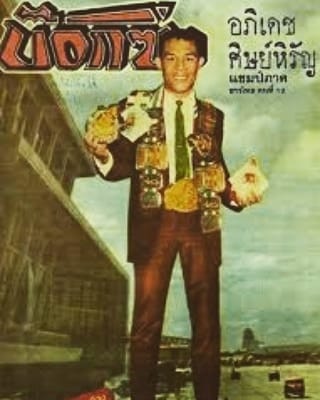
After retiring from Muay Thai, and taking up a career in coaching, Apidej Sit-Hirun earned the acclaimed title “Muay Thai Fighter of the Century” from King, Bhumibol Adulyadej. This is incredible acclaim considering how many legendary Nak Muays fought during this venturing. He beat out all-time greats such as Dieselnoi Chor Thanasukarn, Samart Payakaroon, and Sagat Petchyindee, among thousands of others.
In addition, Apidej was the first Muay Thai fighter in history to have their own display at the Thai National Museum. He carried an impact, not only in his kicks but also with his influence.
And what are the ingredients for crafting an amazing fighter? Apidej Sit-Hirun explains:
“Great fighters have honesty in themselves and others. They have discipline and always respect their trainer. They work hard and never cheat themselves and work hard towards fighting smart, improving skill, technique and tricks. Every technique is harmful when used the right way”.
Preserving Muay Thai
Based on interviews, it seems the largest concern for Apidej Sit-Hirun was trying to conserve traditional Muay Thai. Speaking when he was 62, about ten years before his passing, he said:
“What I want is someone to conserve the disappearing old Muay Thai techniques for the next generation of Thai people. How many modern fighters use the old Muay Thai techniques in the ring?”
In another interview, Apidej Sit-Hirun would add:
“I would like to ask Thais to preserve this martial art. Please don’t sell it just to make some money. Do you know what I’m talking about? When Thai boxers fight foreigners, the Thai boxers will win for sure if they really fight.”
All-time Muay Thai great Samart had expressed similar concerns. He feared that Muay Thai would eventually be a sport no longer for Thai people, but instead would be taken over by Farang (foreign fighters). And not just in the ring, but ownership of Muay Thai would be lost to people overseas, rather than Thai people.
Apidej Sit-Hirun’s journey from a young boy fighting to support his family to becoming “Muay Thai Fighter of the Century” is a tale of extraordinary hard work. His legendary kicks, and footwork mastery, in the ring have earned him a revered place in Muay Thai history. His life story is not just about the triumph of earning impressive world titles, but also about preserving a cultural heritage. As a coach and champion fighter; these make him a true icon in the world of Muay Thai.

